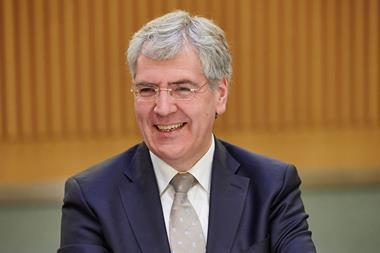One of the frustrations of watching investors plead their case to standard setters and regulators is the near impossibility of reconciling apparently irreconcilable viewpoints. That’s why it was refreshing to see the International Sustainability Standards Board (ISSB) cut through the dead wood and put a single investor under the spotlight at its September meeting last week.
That investor was Jonathan Bailey, the global head of ESG and impact investing at Neuberger Berman. He also happens to be the vice chair of the ISSB’s investor advisor group.
For context, Neuberger Berman Group is a privately held, active investment management firm in the US, advising on equities, fixed income, private equity, and alternatives on behalf of a global clientele of institutional investors and wealthy individuals.
Bailey’s remarks were on his own account, but they also offered a useful insight into the pitfalls ahead for the board as it embarks on a new work programme.
One area where he and the ISSB were on pretty much the same page is the importance of voluntary adoption of its standards, particularly in markets like the US where regulatory adoption is uncertain. Here, he encouraged the ISSB to leverage the existing Sustainability Accounting Standards Board’s (SASB) standards as a stepping stone to the ISSB framework. Unsurprisingly, he emphasised the importance of recognising regional differences.
Bailey said: “We’ve advocated for the SASB standards and […] also for the TCFD [Task Force on Climate-related Financial Disclosures]. And, in our proxy guidelines starting in 2018, we called on companies to reference those frameworks as they were thinking about their disclosures. And we’ve now obviously updated those to reference the ISSB framework.”

Another area where the board is close to the mark is its focus on materiality, where Bailey underscored the importance of financial materiality in standard setting, particularly for topics like biodiversity and human capital.
Materiality has emerged as a core concept, with the ISSB carrying over the definition from the International Accounting Standards Board’s (IASB) financial reporting framework. This is in contrast to the focus in the European Union’s European Sustainability Reporting Standards framework on broader impacts, although the ISSB has committed to work with rival standard setters to ensure interoperability.
But while the US has shown little appetite for adopting the ISSB’s rulebook, as Bailey noted, “about 91% of the S&P 500 index constituents currently provide SASB disclosure.”
Here, he said, was “a significant opportunity” for the board to “work with those companies that are already providing SASB reporting to make that next step towards ISSB to provide us with the full and holistic information we need to serve our clients.”
But perhaps the real surprise was his take on the ISSB’s planned work on biodiversity, which it is pursuing as a research project alongside a similar workstream on human capital.
As Bailey sees it, a standalone cross-cutting standard for biodiversity is unnecessary and instead, he urged, biodiversity considerations should be integrated into existing SASB standards. Of course, this suggestion might not be entirely without its risks.
For him, however, the problem is the “lack of a standard industry consensus on measurement best practices, and [the] heavy reliance on estimation”, meaning that current metrics “are not necessarily able to capture the complexities of nature-related impacts and therefore are, frankly, of little use to us in our investment process at the current time”.
This, he said, made them a poor foundation for a future biodiversity standard. He also noted “a significant challenge” with location-specific data – information tied to a particular geographical area or locality – as well as informational asymmetries between investors and reporting entities.
He said: “We need to be realistic about how much of that is likely to be disclosable and how that information, the volume of that information, might be made available.”
It turns out that Bailey isn’t the only person to have thought about this. ISSB vice chair Sue Lloyd, it seems, has also wondered whether the board’s initial focus on climate change might have given a “false positive” that biodiversity and human capital share the same universality as greenhouse gas emissions.
More specifically, Lloyd wondered if focussing on impact might naturally lead to cross-industry metrics, whereas emphasising financial materiality could necessitate more industry-specific disclosures. Who knows? But, if nothing else, materiality is back under the spotlight.
The latest digital edition of IPE’s magazine is now available
Topics
- Corporate governance
- ESG
- European sustainability reporting standards (ESRS)
- International Accounting Standards Board (IASB)
- International Sustainability Standards Board (ISSB)
- Markets
- materiality
- Neuberger Berman
- Reform & Regulation
- Sustainability Accounting Standards Board (SASB)
- Task Force on Climate-related Financial Disclosures (TCFD)
































No comments yet